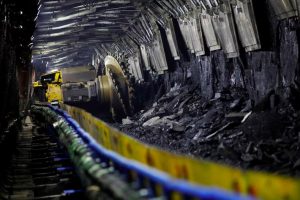The world’s second-largest economy slipped into deflation in July as weak demand continued to fuel a decline in China’s consumer and factory-gate prices.
China’s consumer price index (CPI) dropped 0.3% year-on-year in July, the National Bureau of Statistics (NBS) said on Wednesday, marking the first such decline since February 2021.
The producer price index (PPI) declined for a 10th consecutive month, down 4.4% and faster than the forecast 4.1% fall.
Also on AF: US Set to Outline Ban on Sensitive Tech Investment in China
China is the first G20 economy to report a year-on-year decline in consumer prices since Japan’s last negative headline CPI reading in August 2021. Weakness in the $18 trillion economy has added to concerns about the hit to business among major trading partners.
Anxiety is rising that China is entering an era of much slower economic growth akin to the period of Japan’s “lost decades”, which saw consumer prices and wages stagnate for a generation, a stark contrast to the rapid inflation seen elsewhere.
But some analysts say comparisons with Japan may be premature.
Others such as Paul Krugman, the prominent US economist, say the key question is whether China “can replicate Japan’s social cohesion – its ability to manage slower growth without mass suffering and social instability”.
China’s CPI fall in July was mainly caused by an acceleration in pork price declines to 26% from 7.2% due to a combination of weak consumption at a time of ample supplies. On a month-on-month basis, the CPI actually rose 0.2%, defying expectations for a fall, driven by a surge holiday travel.
Xia Chun, chief economist at Yintech Investment Holdings in Hong Kong, said China’s deflation could last for six to 12 months but won’t follow Japan’s history, where price stagnation has persisted for much of the past two decades.

Two speeds of growth
China’s anaemic prices are a sharp contrast to the crippling inflation most other major economies have seen, that forced central banks elsewhere to rapidly raise interest rates.
The data comes a day after trade figures showed exports and imports both slumping in July.
“For China, the divergence between manufacturing and services is increasingly apparent, meaning the economy will grow at two speeds in the rest of 2023, especially as the problem in real estate re-emerges,” said Gary Ng, Asia Pacific senior economist at Natixis.
“It also shows China’s slower-than-expected economic rebound is not strong enough to offset the weaker global demand and lift commodity prices.”
Investors have been anxiously waiting for policymakers to inject stimulus after the powerful Politburo meeting last month, with the stock market mostly underwhelmed by the lack of concrete actions.
“Markets and businesses should get used to the ‘new normal’ in which the Chinese government will avoid rolling out big stimulus,” Tommy Wu, senior economist at Commerzbank, said.
“Instead, targeted stimulus will be implemented and most policy measures will focus on the supply side,” Wu said.
Gloomy Asian markets
China’s post-pandemic recovery has slowed after a brisk start in the first quarter as demand at home and abroad weakened and a flurry of policies to support the economy failed to shore up activity.
Beijing has set a consumer inflation target of around 3% this year, which would be up from 2% recorded in 2022, and for now, authorities are downplaying concerns about deflation.
Liu Guoqiang, deputy governor of the central bank, last month said there would be no deflationary risks in China in the second half of the year, but noted the economy needs time to return to normal after the pandemic.
In recent weeks, policymakers announced measures to boost sales of cars and appliances while some cities eased property curbs, but some market participants say more decisive stimulus is needed.
Asian shares were on the defensive on Wednesday as the Chinese price data confirmed its economic recovery was losing steam. Nikkei and Shanghai Composite remained on the backfoot, while other Asian indices saw a day of mixed moves.
- Reuters, with additional editing by Vishakha Saxena
Also read:
Investors Load Up Bullish Bets on China After Growth Setback
China Deflation Risks Deepen as Sharp Pay Cuts Hit Consumption
Multiple Moves Needed to Defuse China’s Local Debt Crises
Beijing’s Crackdown Wiped $1.1 Trillion Off Chinese Big Tech
China’s Property Sector Will Remain Weak For Years: Goldman Sachs
Huge Debts Limiting Services in Some Chinese Cities – CNN
























